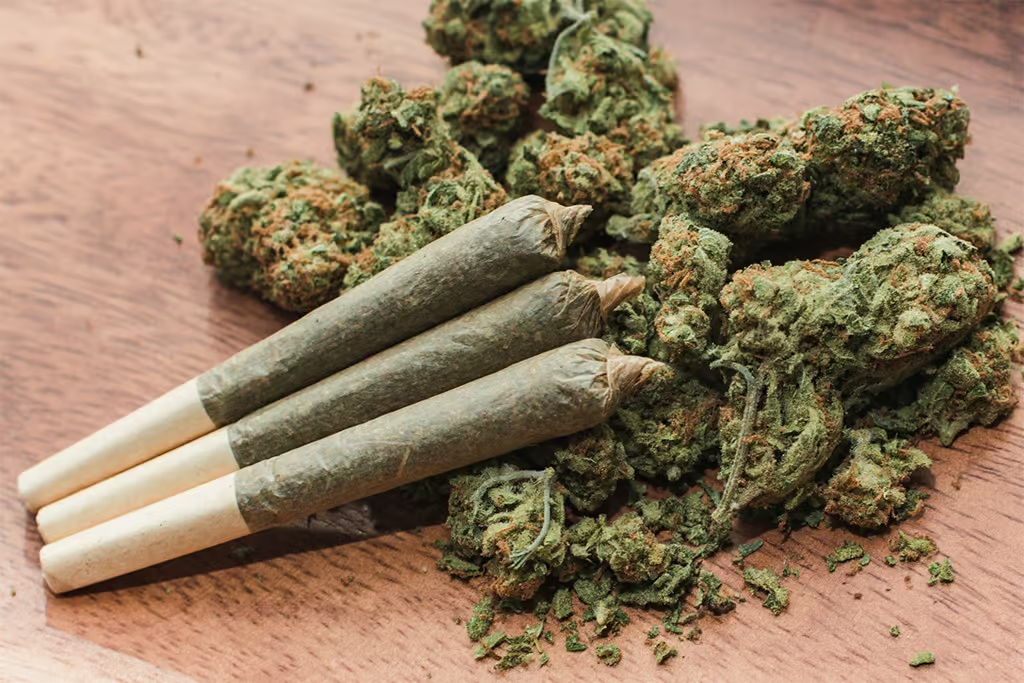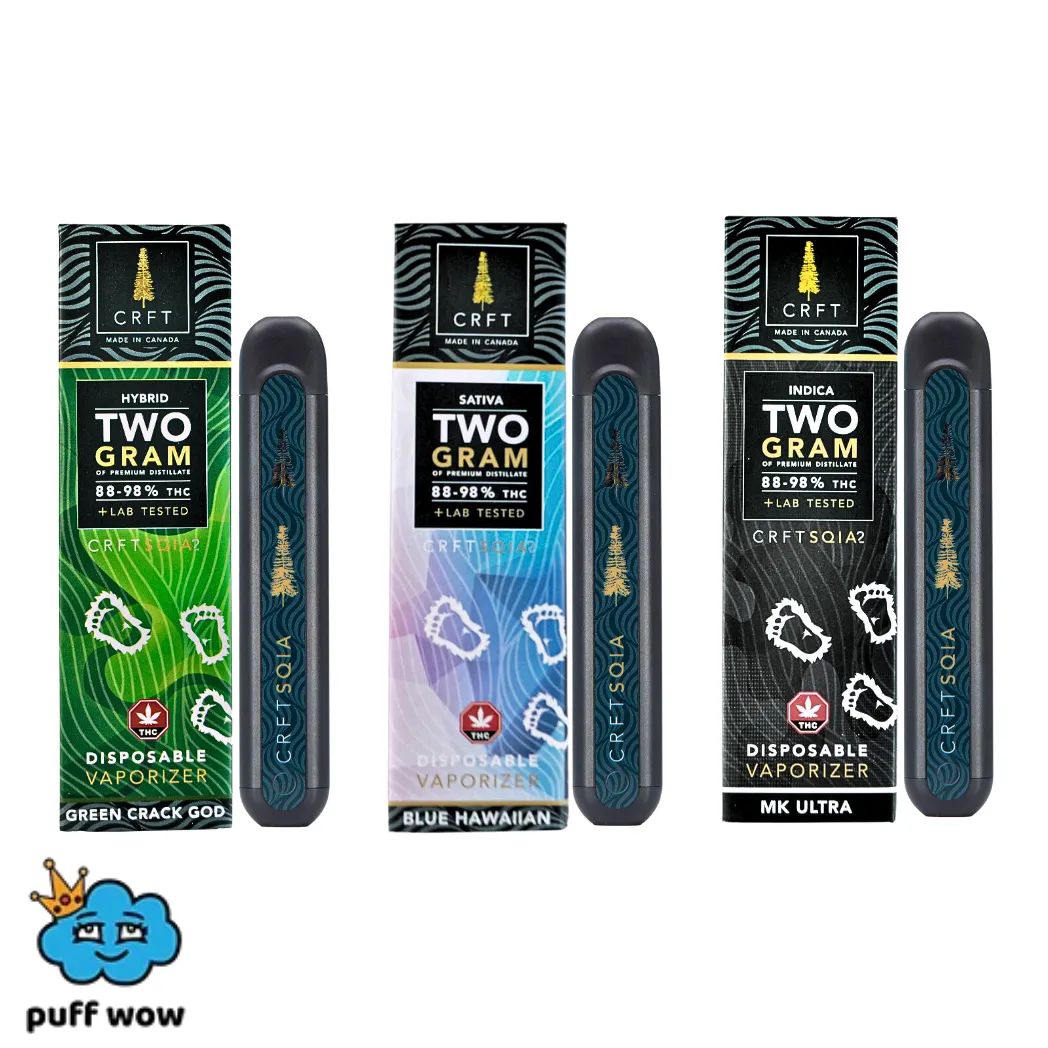
The recent surge in cannabis consumption across Canada is indicative of a significant cultural shift, propelled by evolving attitudes towards the plant and bolstered by its legalization for recreational purposes. This legal framework has not only normalized cannabis use but has also fostered a thriving industry, characterized by a plethora of products and consumption methods. Within this landscape, the terms “joints,” “blunts,” and “spliffs” frequently arise in conversations among enthusiasts and newcomers alike.
While these terms might appear interchangeable to those unfamiliar with cannabis culture, they each denote distinct methods of consumption, each with its own set of characteristics and connotations. Understanding these nuances is crucial for anyone navigating the diverse world of cannabis consumption.
Joints, perhaps the most traditional method, consist solely of cannabis rolled in rolling papers. They offer a straightforward and pure cannabis experience, often appreciated for their simplicity and versatility. On the other hand, blunts involve the use of cigar wraps or blunt wraps, which are typically made of tobacco leaf. This addition of tobacco lends a unique flavour profile and may result in a different smoking experience compared to joints. Spliffs, meanwhile, blend cannabis with tobacco in rolling papers, combining the effects and flavours of both substances.
Beyond their composition, factors such as size and cultural influences further distinguish these methods. For example, blunts are often larger and more robust than joints, reflecting their origins in urban hip-hop culture. Spliffs, on the other hand, have a long-standing tradition in European cannabis culture, where the blending of tobacco and cannabis is more common.
Understanding these differences not only enriches one’s appreciation for cannabis culture but also promotes responsible consumption practices. By being informed about the various methods available, individuals can make choices that align with their preferences and values, whether it be a pure cannabis experience with a joint or a blended experience with a spliff. Ultimately, this knowledge empowers consumers to navigate the ever-expanding world of cannabis with confidence and responsibility.
A joint is a classic method of consuming cannabis, characterized by its simplicity and versatility. Essentially, a joint consists of ground cannabis rolled into a cylindrical shape using rolling papers. This straightforward approach allows consumers to experience the full flavour and effects of the cannabis without any additional additives. To roll a joint, one typically needs rolling papers and ground cannabis. Rolling papers come in various sizes and materials, such as hemp or rice paper, offering options to suit different preferences.

As for cannabis, the choice of strain can greatly influence the flavour, aroma, and effects of the joint. Popular strains for joints often include well-known varieties such as OG Kush, Blue Dream, or Sour Diesel, each offering its own unique combination of cannabinoids and terpenes. Rolling a joint is a skill that can be mastered with practice, typically involving steps such as evenly distributing the ground cannabis along the paper, rolling it into a tight cylinder, and sealing it with a twist or lick. The simplicity of joints, combined with the wide array of strains available, makes them a popular choice among cannabis enthusiasts seeking a pure and uncomplicated consumption experience.
A blunt is a method of cannabis consumption that differs from a joint primarily in its composition. While both involve rolling cannabis into a cylindrical shape, blunts are rolled using cigar wraps or blunt wraps, which are typically made from tobacco leaves. This addition of tobacco lends a distinct flavor and aroma to the cannabis, resulting in a different smoking experience compared to joints. To roll a blunt, one needs blunt wraps and ground cannabis.
Blunt wraps come in various flavors and sizes, allowing consumers to customize their smoking experience. Rolling a blunt follows a similar process to rolling a joint, involving steps such as evenly distributing the ground cannabis along the wrap, rolling it into a tight cylinder, and sealing it. The use of tobacco wraps not only alters the taste and aroma but also affects the potency and duration of the high, as tobacco can enhance the effects of cannabis. Compared to joints, blunts are often larger and burn slower, making them a preferred choice for those looking for a longer-lasting smoking session.

However, it’s important to note that the inclusion of tobacco in blunts may pose health risks, particularly for those sensitive to nicotine or concerned about the adverse effects of smoking. Ultimately, the choice between joints and blunts comes down to personal preference, with each offering a unique smoking experience shaped by composition, flavour, and cultural influences.
A spliff is a hybrid method of cannabis consumption that combines elements of both joints and cigarettes. Unlike joints, which consist solely of cannabis, and blunts, which incorporate tobacco wraps, spliffs blend cannabis with tobacco in rolling papers. This combination results in a unique smoking experience that combines the effects and flavors of both substances. To roll a spliff, one needs rolling papers, ground cannabis, and tobacco.
Rolling papers come in various sizes and materials, offering options to suit different preferences. The inclusion of tobacco in spliffs not only adds a distinctive flavor and aroma but also alters the overall smoking experience. Rolling a spliff follows a similar process to rolling a joint, involving steps such as evenly distributing the ground cannabis and tobacco along the paper, rolling it into a tight cylinder, and sealing it. The use of tobacco in spliffs can enhance the burning properties of the joint and may produce a smoother smoke compared to pure cannabis joints. However, it’s essential to consider the potential health risks associated with smoking tobacco, including addiction and respiratory issues.
Additionally, individuals sensitive to nicotine or concerned about the adverse effects of tobacco should approach spliffs with caution. Ultimately, the choice to smoke spliffs comes down to personal preference, with some enjoying the blended experience and others opting for pure cannabis joints to avoid the risks associated with tobacco.
The differences between joints, blunts, and spliffs extend beyond mere semantics, encompassing variations in composition, size, smoking experience, and cultural significance. Firstly, the composition sets these methods apart: joints consist solely of cannabis rolled in rolling papers, while blunts incorporate tobacco wraps alongside cannabis, and spliffs combine cannabis with tobacco in rolling papers. This distinction in composition not only affects the flavour and aroma of the smoke but also influences the overall smoking experience.
Secondly, size and shape play a role in distinguishing these methods. Joints are typically smaller and more slender compared to blunts, which tend to be larger and thicker due to the addition of tobacco wraps. Spliffs may vary in size depending on the ratio of cannabis to tobacco used in the rolling process.
Smoking experience and flavour are further differentiating factors. Joints offer a pure cannabis experience, allowing consumers to fully appreciate the flavours and effects of the chosen strain. Blunts, with their tobacco wraps, introduce a unique flavour profile characterized by the combination of cannabis and tobacco. Spliffs provide a blended experience, with the flavours and effects of both substances intertwining to create a distinct smoking experience.

Lastly, cultural and regional variations contribute to the diversity of these methods. Joints have long been associated with cannabis culture and countercultural movements, particularly in North America. Blunts, on the other hand, have roots in urban hip-hop culture and are often celebrated for their larger size and robust flavour. Spliffs have a strong presence in European cannabis culture, where the blending of cannabis and tobacco is more prevalent.
Overall, understanding these differences enriches one’s appreciation for cannabis culture and informs consumption preferences. Whether it’s the purity of a joint, the robustness of a blunt, or the blended experience of a spliff, each method offers a unique journey into the world of cannabis consumption, shaped by composition, size, flavour, and cultural influences.
Health considerations are paramount when discussing cannabis consumption, particularly in relation to the potential impacts of tobacco and cannabis smoke on the body. Firstly, the impact of tobacco on health is well-documented, with smoking being a leading cause of preventable death worldwide. Tobacco smoke contains numerous harmful chemicals, including carcinogens and toxins, which can increase the risk of various health issues such as lung cancer, heart disease, and respiratory problems. The addictive nature of nicotine further compounds these risks, making tobacco use a significant public health concern.
Similarly, while cannabis has been touted for its therapeutic properties, smoking it carries its own set of risks. The combustion of cannabis produces tar and carcinogens, which can irritate the respiratory system and potentially lead to lung problems over time. Additionally, regular cannabis smoking has been associated with respiratory symptoms such as coughing, phlegm production, and bronchitis. While research on the long-term effects of cannabis smoking is ongoing, it’s essential to acknowledge these potential risks, particularly for individuals with pre-existing respiratory conditions or those who smoke regularly.
Given these health considerations, exploring alternative methods of cannabis consumption is advisable. Vaporization, for example, involves heating cannabis to a temperature that releases its active compounds without producing smoke, thereby reducing the inhalation of harmful substances. Edibles offer another smoke-free option, allowing consumers to ingest cannabis-infused food or beverages to experience its effects. Additionally, tinctures, oils, and topicals provide alternative ways to consume cannabis without the need for smoking. By diversifying consumption methods, individuals can mitigate the potential risks associated with smoking while still enjoying the therapeutic benefits of cannabis. However, it’s essential to approach any method of cannabis consumption mindfully and in accordance with personal health considerations.
In Canada, the legalization of cannabis for recreational use in 2018 marked a significant shift in the country’s approach to drug policy. Under the Cannabis Act, adults aged 18 or older (19 in some provinces) are permitted to purchase, possess, and consume cannabis products, subject to certain restrictions and regulations. The legislation outlines strict guidelines regarding the production, distribution, and sale of cannabis, with licensed producers and retailers required to adhere to rigorous quality control standards to ensure consumer safety. Additionally, the Cannabis Act includes provisions aimed at preventing the illicit production and trafficking of cannabis, with penalties for those found to be in violation of the law.
Regarding the use of tobacco in cannabis products, Canadian regulations impose restrictions to minimize the health risks associated with smoking. The Tobacco and Vaping Products Act governs the manufacturing, labeling, and sale of tobacco products, including those used in conjunction with cannabis. Under this legislation, the sale of flavoured tobacco products, which may appeal to youth, is prohibited.
Moreover, packaging and labeling requirements mandate the inclusion of health warnings and information about nicotine content to inform consumers of the potential risks associated with tobacco use. These regulations aim to strike a balance between promoting public health and ensuring access to legal and regulated cannabis products for adult consumers in Canada.
In popular culture, joints, blunts, and spliffs have all made their mark, often portrayed in various forms of media such as movies, music, and literature. Each method of consumption carries its own set of associations and connotations, which are reflected in their depictions in the media. Joints, for example, are frequently depicted in countercultural movements and films that celebrate cannabis culture, where they symbolize rebellion and freedom.
Blunts, with their ties to hip-hop culture, have become emblematic of urban street life and are often glamorized in rap music videos and movies. Spliffs, while less prevalent in mainstream media, are sometimes depicted in European films and literature, reflecting their popularity in regions where the blending of cannabis and tobacco is more common.
Over time, consumption preferences have evolved alongside changes in societal attitudes and advancements in cannabis technology. While joints remain a staple of cannabis culture, there has been a growing interest in alternative consumption methods such as vaporization, edibles, and concentrates. Vaporizers, in particular, have gained popularity for their convenience, discretion, and perceived health benefits compared to smoking. Edibles, which offer a smoke-free option for consuming cannabis, have also seen increased demand, driven by innovations in product formulations and flavours.
Additionally, the emergence of cannabis-infused beverages and topicals reflects a growing trend towards diversification and mainstream acceptance of cannabis products. As consumer preferences continue to evolve, so too will the methods and products available in the cannabis market, shaping the future of consumption trends in popular culture.
When it comes to comparing the potency of blunts and joints, the answer is not straightforward. Both blunts and joints can deliver potent effects depending on various factors such as the strain of cannabis used, the amount consumed, and individual tolerance levels. However, blunts, which typically contain a mixture of cannabis and tobacco, may produce a different type of high compared to joints due to the inclusion of nicotine from the tobacco. Nicotine can enhance the effects of cannabis, leading some users to perceive blunts as more potent. However, it’s essential to consider the potential health risks associated with smoking tobacco when opting for blunts, particularly for those sensitive to nicotine or concerned about addiction.
Mixing tobacco and cannabis in a joint, commonly referred to as a spliff, is a matter of personal preference. While some individuals enjoy the blended experience of combining tobacco and cannabis, others prefer to keep their consumption methods separate. Spliffs offer a unique smoking experience characterized by the flavors and effects of both substances intertwining. However, it’s crucial to consider the potential health risks associated with smoking tobacco, including addiction and respiratory issues. Additionally, individuals should be mindful of their own tolerance levels and preferences when deciding whether to mix tobacco and cannabis in a joint.
For beginners, choosing the easiest rolling method depends on individual preferences and comfort levels. Some may find rolling a joint with rolling papers and cannabis to be the simplest method, as it requires minimal additional materials and allows for complete control over the cannabis content. Others may prefer using pre-made blunt wraps or tobacco leaf wraps for rolling blunts, as they can be easier to handle and seal for novice rollers. Ultimately, the best rolling method for beginners is one that feels comfortable and intuitive, allowing for a smooth and enjoyable smoking experience. Practice and experimentation can help individuals refine their rolling skills and find the method that works best for them.
In conclusion, it’s evident that joints, blunts, and spliffs each offer a distinct experience in the realm of cannabis consumption. Joints, composed solely of cannabis and rolling papers, provide a pure and straightforward smoking experience, while blunts introduce tobacco wraps for a unique flavor profile and potentially enhanced potency. Spliffs, blending cannabis with tobacco, offer a blended experience that combines the flavours and effects of both substances. Understanding the differences between these methods is crucial for informed consumption decisions and preferences.
The cultural significance of joints, blunts, and spliffs is deeply rooted in various subcultures and regions, reflecting the diversity of cannabis culture worldwide. From countercultural movements to urban street life to European traditions, each method carries its own set of associations and connotations that shape its representation in popular culture.
However, amidst the cultural allure of cannabis consumption, it’s essential to consider practical considerations and health implications. Responsible consumption practices involve mindful awareness of individual tolerance levels, preferences, and potential health risks associated with smoking, particularly when tobacco is involved. Exploring alternative methods of consumption, such as vaporization or edibles, can offer smoke-free options that minimize health risks while still providing the desired effects.
In encouraging responsible and informed consumption practices, it’s important to prioritize health and well-being while embracing the rich tapestry of cannabis culture. Whether enjoying a pure cannabis joint, a robust blunt, or a blended spliff, consumers should approach their cannabis experience with mindfulness and moderation, fostering a culture of responsible consumption and appreciation for the diverse array of methods available.
Order weed online in Winnipeg. Puff Wow makes it easy to buy Cannabis online with our secure checkout and fast delivery.
Winnipeg, Manitoba
Canada

